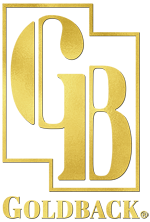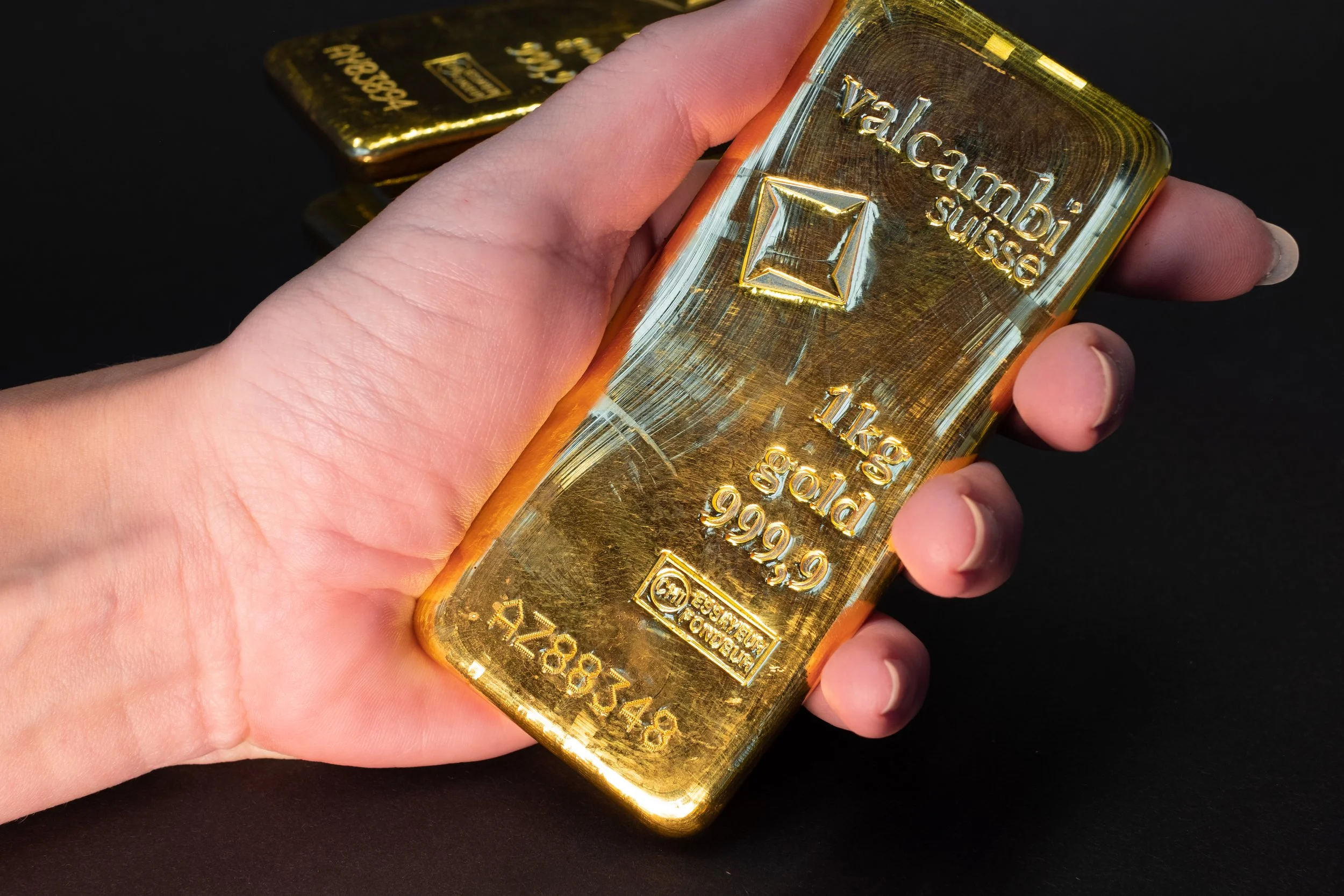What’s in store for Goldback Premiums?
Perhaps the single biggest misunderstood concept regarding Goldbacks, within the bullion community, are their premiums. It’s no secret that you’re paying around 100% over spot when purchasing them. For many in the stacking community, reasonable premiums on hyper-fractional bullion products seem to be regarded as a heresy that completely discredits the Goldback and relegates them to being nothing more than a novelty product, doomed to be sold for below melt value, at some future date when buyers wise up to our "scheme". One doesn’t need to look far to find this message repeated online.
This article dives into this subject in two ways:
1.“Why do Goldbacks cost so much more in terms of premium than gold coins?”
2. “What might Goldback premiums look like in the future?”
A single one-ounce gold coin produced by a mint has legitimate production costs that require markups, much like any other product on earth. The economic law here is that when the costs of time and energy are added to something, it carries more value. For example, if U.S. Mint takes a 1 kilo bar of gold and converts it into 32 one ounce U.S. Gold Eagles, then those same Eagles would be worth collectively more than the 1 kilo bar. The additional mintage cost for each coin is somewhere around $80. The Mint could then take the same 1 ounce gold coins and break them down into 1/10th ounce coins which would carry an even higher value despite being the same amount of gold. The cost per unit is still around $80 each here for the smaller coins. There is a relatively flat cost per unit when making smaller units of gold (or really any material if you think about it). This is why the U.S. Mint places a 40% premium over the gold spot price on their 1/10th ounce US Gold Eagles coins. This premium has been relatively consistent for decades. What kind of premium do you think the U.S. Mint would charge for a 1/1,000th of an ounce coin? (Switzerland released a limited 1/500th of an ounce gold coin in 2020 and it was sold at a ~5,000% premium, it was so small that it came with a magnifying glass)
Microchips get their gold through a process similar to Goldbacks.
The creation cost of a single 1/1,000th of an ounce unit of serialized gold, in the form of a Goldback, is under $2. This means that one Goldback can be sold for under $4. Goldbacks aren’t made out of some sort of gold foil. The process for creating Goldbacks is far more sophisticated and high-tech than that of minting gold coins as we are using micro-technology and each unit has a unique serial number. This is the same micro-technology responsible for adding microscopic amounts of gold into smartphone or vehicle computer chips. Goldbacks aren’t coming out of some sort of roller machine like carnival pennies. The fact that we can produce any gold product for $2 a unit is revolutionary to the gold space as it is about 1/40th the cost of the production of a typical gold coin. The idea that gold can be split into a thousand serialized pieces for free is a bit ludicrous if you really think about it. Yet, that’s exactly why Goldbacks are being criticized. Some folks expect the production cost per unit to be $0. In fact, Goldbacks are substantially less expensive than traditional bars of the same weight. Silverpicker on YouTuber did a great analysis on the world of fractional gold premiums that can be seen here:
We actually argue that Goldbacks are inexpensive for what they really are because the added utility value doesn’t go away, it appreciates too. Goldbacks can be bought and traded for around $4. If the concept of adding value to materials through labor is difficult to grasp then imagine trying to buy a new vehicle for melt value or a pencil for the direct fractional value of lumber and graphite per ton. (Pencils carry about a 10,000% premium)
A pencil has more utility per weight than a giant felled log. A car has more utility than a hunk of metal. A thousand individual goldbacks have far more utility than a single gold coin, especially if you ever plan to barter or trade with your metal. Who wouldn’t rather be able to trade a thousand times for small items vs. just once for something expensive? We aren’t even getting into the fact that Goldbacks have never been counterfeited, the same can’t be said for coins. Goldbacks cost more because they are worth more.
The market agrees. Commodity money in the form of Goldbacks is becoming quite popular as the Goldback has already proven to be more successful than any other local currency project in the history of the United States. At the time of writing there are an estimated 1,000,000 users of Goldbacks. It turns out that sound money is popular.
As far as we can tell, much of the opposition to Goldbacks really comes from two groups;
Bullion customers that have been taught for decades to buy gold as close to spot as possible. The Goldback is new and draws their skepticism.
Coin dealers that have been selling the same products for over forty years and aren’t interested in branching out. The Goldback is inherently threatening to them because they don’t understand it and they don’t want to lose customers. (They could apply to retail Goldbacks by emailing us at info@Goldback.com at any time)
It’s somewhat ironic that these two groups are opposed to an otherwise successful sound money project. This situation isn’t that bad though. As it stands, there simply haven’t been enough Goldbacks to meet market demand as it is, so this type of opposition is healthy even if it is somewhat misguided. We’ll win most of them over eventually. We’ve already had several dozen coins dealers begin selling Goldbacks that adamantly opposed them at first. In Wyoming every single coin dealer signed on to sell the Goldback before the Wyoming launch. Many ideas take time to digest and it’s no different for the Goldback.
Wyoming Launched in 2022.
What about the future though? Well, it’s hard to say what the future holds for Goldback premiums, but we can speculate a bit. First, looking at the past, it’s worth noting that Goldbacks have appreciated in value more than coins have!
In 2019 when Goldbacks launched they cost $2. Today the average rate is closer to $4. During this same period coins went up about 50%. This means that Goldbacks outperformed Gold coins over the past four years.
During volatile periods like in 2020 when Covid-19 restrictions hit the world, Goldback prices went hyperbolic as people worried that government backed currencies could collapse. At one point Goldbacks sold out across all retailers and were only available on Ebay for $50. The added utility value of a Goldback has proven to appreciate more than the gold itself as people look for currencies that work. This places Goldback owners in a superior place value wise. As of the beginning of 2023 Goldbacks only account for about 0.3% of the U.S gold market which means that only 0.3% of gold sold in 2022 was optimally designed to be used as money. The value of any money is based on supply and demand. Based on the limited supply of Goldbacks and the titantically enormous demand for functioning money we’d argue that Goldbacks are extremely undervalued.
Wise observers in the market have already begun converting gold coins that they had earmarked for bartering and spending into Goldbacks. Some have stopped buying coins altogether since their purpose in owning Gold coins is to have a currency of value. Sales on Goldbacks have been so high that we’ve struggled to simply keep up with demand at all.
There’s also the numismatic argument for price appreciation for the Goldback. If you were to have purchased Goldbacks in 2019 then your Goldback could be worth nearly 10x! This is because 2019 Goldbacks are rare and singles sell on Ebay for about $20 now. As Goldback scales up this could eventually become true for 2020s, 2021s, and 2022s as well. This is especially true since the artwork changed in 2023 for the Nevada and New Hampshire series.
The final point worth saying here is that there seems to be an assumption that selling the Goldback is outragously profitable. This isn’t true. In fact, the one denomination is still produced at a loss in manufacturing! How many products sell at a manufacturing loss? We do this to give customers the best possible value. Higher denominations are comparable to other fractional gold products.
We are beginning to see more and more bullion stackers that own gold for the purpose of bartering moving 100% into Goldbacks. We are doing everything in our power to increase production before another 0.3% of Bullion Stackers figure out which type of gold has the best spending utility.




